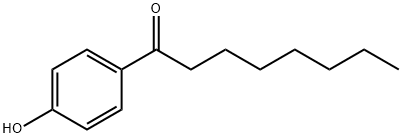Silydianin
Synonym(s):Silidianin
- CAS NO.:29782-68-1
- Empirical Formula: C25H22O10
- Molecular Weight: 482.44
- MDL number: MFCD09970974
- EINECS: 249-848-5
- SAFETY DATA SHEET (SDS)
- Update Date: 2024-11-19 15:53:33

What is Silydianin?
Description
Silydianin is a flavonolignan found in S. marianum and has diverse biological activities. It inhibits tyrosinase (IC50 = 2.6 μM for the mushroom enzyme) and scavenges DPPH radicals in a cell-free assay (IC50 = 66.8 μM). Silydianin (100 μM) protects against cytotoxicity induced by allyl alcohol, carbon tetrachloride, paracetamol (acetaminophen), or D-galactosamine in primary human hepatocytes. It inhibits the proliferation of DU145 and PC3 prostate cancer cells when used at a concentration of 90 μM. Silydianin (1%) prevents methacholine-induced airway hyperresponsiveness (AHR) and reduces blood and bronchoalveolar lavage fluid (BALF) levels of eosinophils in an ovalbumin-sensitized mouse model of allergic asthma when administered via inhalation.
Originator
Silydianin was isolated for the first time by G. M schlin during initial experiments with S. marianum fruits as a compound named E5.
The Uses of Silydianin
Silydianin is an active constituent of Silybium marianum and is known the exhibit anti-inflammatory activity which regulates caspase-3 activation which affects cell membranes and acts as a free radica l scavenger.
The Uses of Silydianin
Silydianin is an active constituent of Silybium marianum and is known the exhibit anti-inflammatory activity which regulates caspase-3 activation which affects cell membranes and acts as a free radical scavenger.
Cytotoxicity
Cell suspensions were incubated with different concentrations of silydianin (up to a final concentration of 1–100 μM) for 30 min at 37 °C in a dark incubator and untreated control samples. The samples were then centrifuged at 800–900 rpm, PMNs were resuspended in RPMI 1640, and 0.4% trypan blue and the viable and dead cells were scored. The cell viability was 94.8 ± 3.8% for silydianin at concentrations of 1–100 μM, indicating no cytotoxicity toward neutrophils[2].
References
[1] David Biedermann . “Oxidation of flavonolignan silydianin to unexpected lactone-acid derivative.” Phytochemistry Letters 30 (2019): Pages 14-20.
[2] Ma?gorzata Zielińska-Przyjemska, Krzysztof Wiktorowicz. “An in vitro study of the protective effect of the flavonoid silydianin against reactive oxygen species.” Phytotherapy Research 20 2 (2006): 115–9.
Properties of Silydianin
| Melting point: | 191℃ |
| Boiling point: | 819.0±65.0 °C(Predicted) |
| Density | 1.675±0.06 g/cm3(Predicted) |
| storage temp. | 2-8°C |
| solubility | DMSO (Slightly), Methanol (Slightly, Sonicated) |
| form | neat |
| pka | 7.41±0.60(Predicted) |
| form | Solid |
| color | White to Off-White |
| Water Solubility | practically insoluble in water |
Safety information for Silydianin
| Signal word | Warning |
| Pictogram(s) |
 Exclamation Mark Irritant GHS07 |
| GHS Hazard Statements |
H302:Acute toxicity,oral |
Computed Descriptors for Silydianin
New Products
4-Fluorophenylacetic acid 4-Methylphenylacetic acid N-Boc-D-alaninol N-BOC-D/L-ALANINOL Tert-butyl bis(2-chloroethyl)carbamate 3-Morpholino-1-(4-nitrophenyl)-5,6-dihydropyridin- 2(1H)-one Furan-2,5-Dicarboxylic Acid Tropic acid S-2-CHLORO PROPIONIC ACID ETHYL ISOCYANOACETATE 2-Bromo-1,3-Bis(Dimethylamino)Trimethinium Hexafluorophosphate (6-METHYL-[1,3]DITHIOLO[4,5-b]QUINOXALIN-2-ONE INDAZOLE-3-CARBOXYLIC ACID 4-IODO BENZOIC ACID (2-Hydroxyphenyl)acetonitrile 4-Bromopyrazole 5,6-Dimethoxyindanone 2-(Cyanocyclohexyl)acetic acid 4-methoxy-3,5-dinitropyridine 2-aminopropyl benzoate hydrochloride 1-(4-(aminomethyl)benzyl)urea hydrochloride diethyl 2-(2-((tertbutoxycarbonyl)amino) ethyl)malonate tert-butyl 4- (ureidomethyl)benzylcarbamate Ethyl-2-chloro((4-methoxyphenyl)hydrazono)acetateRelated products of tetrahydrofuran








You may like
-
 Silydianin CAS 29782-68-1View Details
Silydianin CAS 29782-68-1View Details
29782-68-1 -
 Silydianin CAS 29782-68-1View Details
Silydianin CAS 29782-68-1View Details
29782-68-1 -
 1975-50-4 98%View Details
1975-50-4 98%View Details
1975-50-4 -
 2-HYDROXY BENZYL ALCOHOL 98%View Details
2-HYDROXY BENZYL ALCOHOL 98%View Details
90-01-7 -
 2-Chloro-1,3-Bis(Dimethylamino)Trimethinium Hexafluorophosphate 221615-75-4 98%View Details
2-Chloro-1,3-Bis(Dimethylamino)Trimethinium Hexafluorophosphate 221615-75-4 98%View Details
221615-75-4 -
 61397-56-6 CIS BROMO BENZOATE 98%View Details
61397-56-6 CIS BROMO BENZOATE 98%View Details
61397-56-6 -
 14714-50-2 (2-Hydroxyphenyl)acetonitrile 98+View Details
14714-50-2 (2-Hydroxyphenyl)acetonitrile 98+View Details
14714-50-2 -
 118753-70-1 98+View Details
118753-70-1 98+View Details
118753-70-1